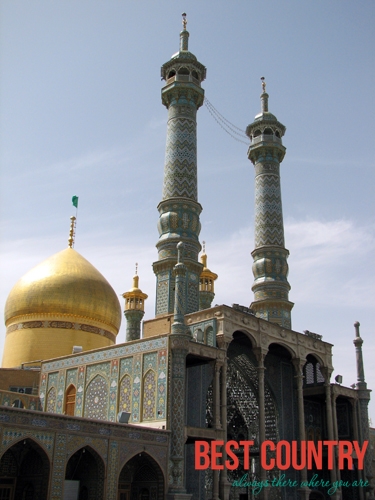Religions of Iran

Christianity, Judaism and Zoroastrianism are considered belonging to the same traditions as Islam, and little oppression is reported.
All three communities are guaranteed a place in Majlis, the Iranian national assembly, sharing 5 out of a total of 270 sears (2 seats for Armenians; 1 each for Assyrians; Jews; and Zoroastrians).
For the Baha'i faith, conditions have been hard for decades, being considered heretics by the Iranian religious elite, the ulama. Baha'is are not permitted into higher institutions of education.
Despite being protected, schools of recognized minorities must be headed by Muslim principals.
Islam
Islam in Iran are divided to two vital communities, Shi'i and Sunni. Commonly, but erroneously, two more are listed as part Islam: Alevism and Ahl e-Haqq.
Iran had a substantial community of Isma'ilis, but they fled to India in the 1840's.
Shi'i
Until the 16th century, Iran was predominantly Sunni. The process leading to victory for Shi'ism in Iran begins when it becomes the state religion of an effective state, the Safavid dynasty. Shi'ism was promoted by great brutality, and thousands were killed.
Shi'ism in Iran is lead by a distinct religious leadership, centralized and with a clear hierarchy. Many of the existing structures developed from the last few decades, a period in which religion has been the major force in politics.
Sunni
Sunnis of Iran are mainly Turkmens, Arabs, Balochis and Kurds, all living in the fringes of the Iranian heartland, bordering Iran's Sunni neighbours. Sunnis of Iran largely belong to the Hanafi madhhab (school) of Sharia (theology and jurisprudence).
Sunnis are allowed to use their own law and theology schools.
Sufi
Sufism in Iran, like any other country, is a sub-orientation, found both among Sunnis and Shi'is. The main orders, tariqas, are the Safaviya and Nimatullahi, while Naqshbandi is the main order among Kurds in the west.
Estimates to the number of members of a Sufi order varies between 2 and 5 million.
Ahl-e Haqq
The Ahl-e Haqq is one of the religions that find peace with the Islamic dominance in Iran by accepting to be labelled part of Islam (see Taqiyya religions). Ahl-e Haqq is mainly found in the mountainous regions near the border to Iraq.
Alevism
Alevism is a major religion of Turkey, but a marginal phenomenon in Iran. It is found in the mountainous regions near the border to Turkey.
Christianity
The Christian population of Iran counts about 300,000, of which 200,000 are Armenians. The distribution between other churches is not clear.
Iran is home of many historical churches, the most famous is the Tatavous Vank near Makou. Iran has hundreds of active churches. The Armenians are headed by Archbishop Manukian.
Baha'i
The Baha'i community of Iran is subject to a brutal apartheid politics, being a faith unrecognized by the authorities. At times, simply being Baha'i was a crime punishable by prison.
Most Baha'is live in Teheran, but there are also some pure Baha'i villages in the Fars and Mazandaran provinces.
Most Baha'is are Persians, there are also Azerbaijani and Kurdish Baha'is.
Zoroastrianism
There are today only 35,000 to 60,000 Zoroastrians left in Iran. They are largely Persians, and form communities in Teheran, Kerman and Yazd. The low number of remaining Zoroastrians is a consequence of centuries of suppression from the Muslims, ranging form forced conversions, harassment to executions.
In modern Iran, Zoroastrians is one of the recognized, hence protected, religions.
Hinduism
There is little data on Hinduism in Iran. Wikipedia suggest that there are about 68,000 Hindus in Iran, but this is not confirmed by other sources.
All evidence rather suggest that the Islamic regime since 1979 would have caused enough hardship upon such a sizeable community that there at least would have been evidence of persecution, but there is not.
Judaism
Judaism is a recognized religion of Iran, and the Jewish community is generally well-treated by the authorities, and Jews are considered loyal citizens. They are secured representation in the parliament, the Majlis.
Despite their protected status, the size of the Jewish community has been drastically reduced, from about 80,000 in the early 1980's, to about 30,000 today. The largest community of Iranian Jews is today not in Israel, but in the United States.
Iranian Jews form communities in Teheran, Esfahan, Shiraz and Yazd.
Mandaeism
Reports suggest indirectly that there are Mandeans in Iran. Their numbers are not given, and they are classified as Christians by the authorities although both they and Christians consider them an independent faith.